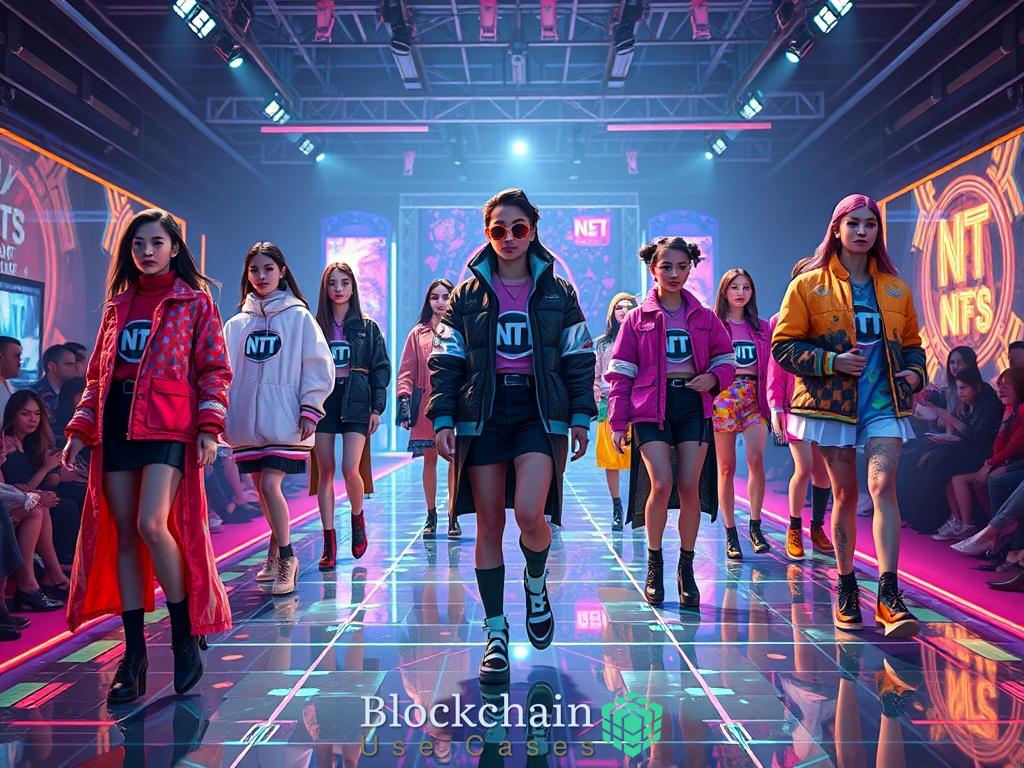Emergence of Decentralized Fashion Marketplaces
The rise of decentralized platforms is transforming the landscape of virtual fashion design and trading within gaming environments. As digital assets gain significance, virtual fashion is becoming more than just an aesthetic choice—it’s evolving into a viable economic model. This shift is facilitating the emergence of decentralized fashion marketplaces that empower creators and consumers alike.
Decentralization: A Game Changer for Fashion
Decentralization refers to the distribution of authority and decision-making away from a central entity. In the context of virtual fashion, this means that designers can create, showcase, and sell their digital apparel without relying on traditional intermediaries. This new paradigm not only enhances creative freedom but also eliminates many barriers associated with the conventional fashion industry.
Key Features of Decentralized Fashion Marketplaces
Decentralized fashion marketplaces are characterized by several innovative features that set them apart from traditional platforms. Here are some of the key attributes:
- Ownership and Authenticity: Utilizing blockchain technology ensures that each digital item is unique, verifiable, and owned by the creator or the buyer.
- Creator Empowerment: Designers retain a larger share of profits, as they are not bound to pay hefty fees to central platforms.
- Global Reach: These marketplaces transcend geographical boundaries, allowing designers to connect with a global audience.
- Community Engagement: Users can participate in decision-making processes, influencing the types of fashion items that are produced.
Comparative Analysis: Traditional vs. Decentralized Fashion Marketplaces
To better understand the advantages of decentralized fashion marketplaces, it’s essential to compare them with traditional platforms. The table below highlights some key differences:
| Feature | Traditional Marketplaces | Decentralized Marketplaces |
|---|---|---|
| Ownership | Centralized control | Individual ownership on blockchain |
| Profit Distribution | High commission fees | Higher returns for creators |
| Access | Limited to geographical locations | Global access for all users |
| Community Influence | Minimal | High engagement and influence |
NFTs and Their Role in Virtual Fashion

The integration of NFTs, or Non-Fungible Tokens, into the realm of virtual fashion has ushered in a new era of creativity and commerce that is profoundly reshaping how digital apparel is designed, owned, and traded. These unique digital assets serve as the backbone of decentralized fashion marketplaces, providing not just a means of ownership, but also a means of expression and innovation for designers and consumers alike. With the rise of NFTs, the fashion industry is experiencing a paradigm shift, where digital garments are not merely virtual items but are becoming valuable collectibles that can be traded, showcased, and worn in diverse virtual environments.
The Significance of NFTs in Fashion is underscored by their ability to confirm ownership and authenticity in a digital landscape that has often struggled with issues of piracy and replication. By leveraging blockchain technology, NFTs ensure that each fashion item is distinct, traceable, and verifiable, offering a level of security that traditional fashion platforms cannot match. This transformation allows designers to create limited edition pieces that can command higher prices, thus enhancing their earning potential. Moreover, collectors and gamers are drawn to the exclusivity and uniqueness of NFT fashion assets, often leading to bidding wars that can significantly elevate the perceived value of a digital garment.
Bridging the Gap Between Virtual and Real Worlds, NFTs have also begun to bridge the divide between the digital and physical realms of fashion. Some designers are exploring hybrid models that allow consumers to purchase a digital NFT alongside a physical counterpart, creating a seamless experience that caters to both virtual enthusiasts and traditional fashion buyers. This innovative approach not only increases the market for both digital and physical fashion but also enhances brand loyalty and consumer engagement. As brands and designers continue to explore these opportunities, the potential for cross-platform integration becomes increasingly promising.
| Aspect | Traditional Fashion | Decentralized Fashion with NFTs |
|---|---|---|
| Ownership | Centralized, often opaque | Decentralized, transparent ownership on blockchain |
| Authenticity | Hard to verify, prone to counterfeiting | Unique, verifiable through blockchain technology |
| Market Reach | Limited by geography and distribution channels | Global access for buyers and sellers |
| Profit Margins | High fees for designers | Higher returns due to lower transaction costs |
The role of NFTs in the virtual fashion ecosystem is not only a technological advancement but also a cultural shift towards valuing digital creativity. As more designers embrace this new medium, the lines between virtual presence and real-world identity will continue to blur, offering endless possibilities for expression and engagement in the ever-evolving landscape of fashion.
User-Generated Content in Decentralized Gaming

The rise of decentralized platforms has not only revolutionized how fashion is perceived in virtual worlds but has also paved the way for an explosion of user-generated content (UGC). In these environments, players are no longer just consumers; they are empowered creators who can design, share, and trade their virtual fashion items. This shift is not merely cosmetic; it fundamentally alters the dynamics of ownership and creativity in gaming, fostering a vibrant community of designers and enthusiasts.
The Power of User-Creativity is a cornerstone of decentralized gaming. Players can leverage advanced design tools and blockchain technology to craft unique digital garments that reflect their personal style or artistic vision. Unlike traditional gaming models where creativity is confined to developers, decentralized platforms enable users to express themselves freely, making fashion a collaborative endeavor. This democratization of design not only enriches the gaming experience but also encourages a diverse array of styles and trends.
Moreover, the ability to mint their creations as NFTs ensures that designers can claim ownership and monetize their work. This creates a direct incentive for players to invest time and creativity into the fashion they produce. As a result, the virtual fashion market has become a thriving ecosystem where innovative designs can gain recognition and value among peers.
| User-Generated Content | Traditional Gaming Models |
|---|---|
| Empowered creators who can design and trade fashion items | Limited to developer-produced content |
| Ownership secured through NFTs | Centralized ownership, often opaque |
| Diverse styles driven by community engagement | Uniform styles dictated by game developers |
In addition to enhancing user creativity, decentralized platforms foster community collaboration. Players can collaborate on fashion projects, share design techniques, and even participate in governance models that influence what types of fashion items are prioritized in the marketplace. This sense of shared ownership and responsibility cultivates a dynamic environment where users feel invested in the success of the platform and each other’s creations.
Furthermore, the integration of user-generated content with blockchain ensures that every contribution is recognized and valued. As users create and trade their digital assets, they build not only their own portfolios but also a collective cultural narrative within the game. This narrative transcends individual contributions, creating a rich tapestry of creativity that can be celebrated by the entire community.
Blockchain Technology’s Impact on Fashion Authenticity
The intersection of blockchain technology and virtual fashion is not just a trend; it represents a fundamental shift in how authenticity is perceived and enforced in the digital landscape. With the proliferation of virtual fashion items, the challenge of ensuring their uniqueness and legitimacy has become increasingly critical. Blockchain technology, with its inherent properties of transparency and immutability, offers a robust solution to these challenges, fostering a new era where authenticity is guaranteed and valued.
Ensuring Authenticity Through Decentralization
In the realm of virtual fashion, authenticity goes beyond mere verification of ownership; it encompasses the entire lifecycle of a fashion item, from creation to sale. Blockchain technology facilitates a decentralized ledger that records every transaction involving a digital garment, ensuring that each item is linked to its creator and original design. This creates a comprehensive audit trail that is accessible to all participants, effectively eliminating the risks of counterfeit products.
Benefits of Blockchain for Virtual Fashion
As the virtual fashion industry continues to expand, understanding the benefits of blockchain technology becomes paramount. Below are key advantages that highlight its impact on fashion authenticity:
- Immutable Records: Each transaction is recorded on a blockchain, making it nearly impossible to alter or falsify information regarding ownership and creation.
- Provenance Tracking: Designers and consumers can trace the history of a fashion item, verifying its authenticity and value over time.
- Enhanced Consumer Trust: With verifiable ownership and authenticity, consumers are more likely to invest in virtual fashion, knowing they are purchasing genuine items.
- Limited Editions and Scarcity: Blockchain allows designers to create limited edition items, enhancing their desirability and collectible nature.
Revolutionizing the Fashion Ecosystem
As blockchain technology continues to evolve, its integration into the virtual fashion ecosystem promises to revolutionize how authenticity is conceptualized and experienced. This digital transformation not only bolsters consumer confidence but also empowers designers to cultivate their brand narratives with greater assurance. The fusion of creativity and technology is setting new standards for what it means to own and engage with fashion in virtual environments, paving the way for a future where authenticity is both a given and an expectation.
Community-Driven Design Trends in Virtual Environments
The evolution of decentralized platforms has not only transformed the trading of virtual fashion but has also sparked a movement towards community-driven design trends within gaming environments. As players embrace their roles as creators, the fashion landscape in virtual worlds is becoming a reflection of collective creativity and collaboration. This shift is reshaping the way designs are conceived, produced, and celebrated, leading to a vibrant ecosystem that thrives on user engagement.
Collective Aesthetics: The Birth of Community-Influenced Fashion
In decentralized environments, the traditional hierarchy of fashion design is dismantled, giving rise to a collective aesthetic that embodies the tastes and preferences of the community. Designers are no longer isolated in their studios; instead, they actively engage with their peers and consumers to co-create fashion items that resonate with the broader audience. This collaborative approach not only democratizes the design process but also results in trends that are more reflective of the actual desires and inspirations of the gaming community.
Trendsetters: The Role of Influencers and Community Leaders
Within these decentralized platforms, certain users emerge as trendsetters, influencing design trends and shaping the fashion landscape. Influencers and community leaders play a pivotal role in guiding design directions, often hosting contests, sharing tutorials, and showcasing innovative styles. Their ability to connect with diverse audiences fosters a sense of belonging, encouraging others to participate in the design process.
Design Collaboration: A New Era of Interaction and Innovation
The interactive nature of decentralized platforms facilitates unprecedented levels of collaboration among users. Designers can solicit feedback on their creations, collaborate on projects, and even form design collectives that push the boundaries of virtual fashion. This synergy leads to a dynamic exchange of ideas, resulting in unique styles that blend various cultural influences and artistic expressions.
One of the most exciting aspects of this community-driven approach is the emergence of design competitions and collaborative projects, which can yield stunning results. Below is a list of some of the most notable collaborative design trends:
- Seasonal Themes: Designers come together to create collections that reflect seasonal trends, allowing for a diverse range of styles.
- Cultural Fusion: Collaborations that merge different cultural elements to create unique fashion statements.
- Eco-Conscious Fashion: Community initiatives aimed at designing sustainable virtual fashion items that promote environmental awareness.
This community-driven design trend not only enriches the virtual fashion experience but also instills a sense of ownership and pride among creators. By participating in a collective narrative, users contribute to an evolving tapestry of creativity that defines the virtual fashion landscape.





